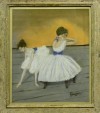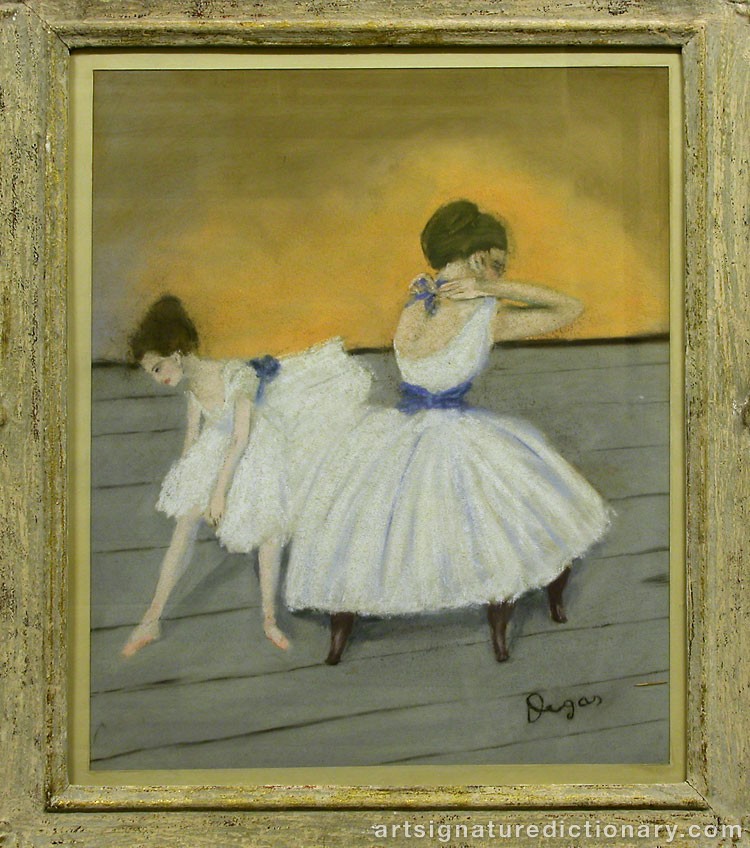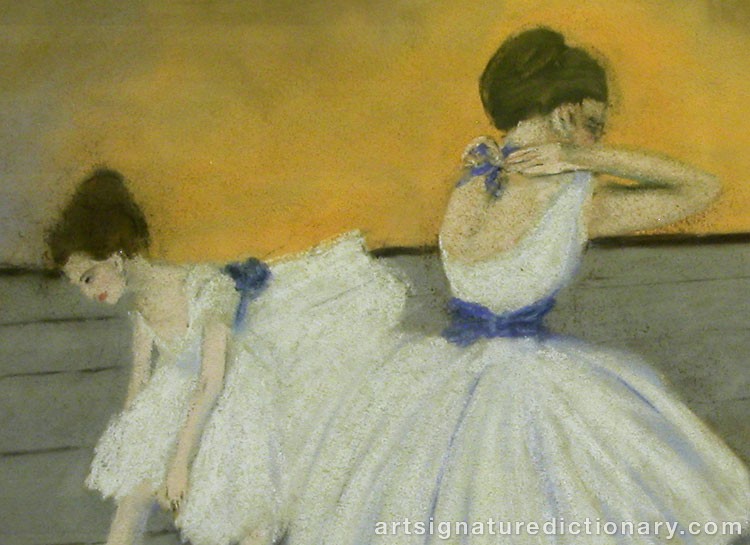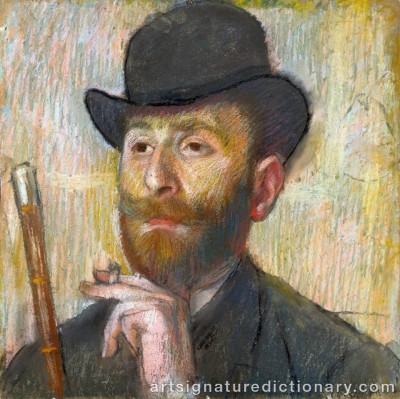
Edgar DEGAS
1834–1917, France
Signatures & monograms
8 signatures and monograms by Edgar Degas on drawing, graphic, print, painting, watercolour and sculpture. Compare authentic and documented counterfeit examples to study signature characteristics.

Signature proven counterfeit
Pastel on panel, interior with ballet dancers, signed "Degas", 55x46. Ostensibly depicting a genuine painting by the French artist Edgar Degas (1834-1917). The painting is part of a major fraud seizures of counterfeit art in Sweden known as ”The Society of Art Friends”: Three men, aged 30, 37, and 40 years old, were caught in Stockholm, Sweden after a reconnaissance tip from police in Ängelholm, Sweden. Shortly afterwards, another two men were caught. In total, 48 house searches were made through out the nation from which 83 forged paintings were confiscated. Forged art had already been sold for millions of Swedish crowns. Victims of the gang were well known businessmen with considerable incomes. League had good help from educated art experts who have written certificate of authenticity to many of the fake paintings, often at very small remuneration. On a door to a flat in Stockholm the men had displayed a sign with the text “The Society of Art Friends”.

Signature considered genuine

Signature considered genuine

Signature considered genuine

Signature considered genuine

Signature considered genuine
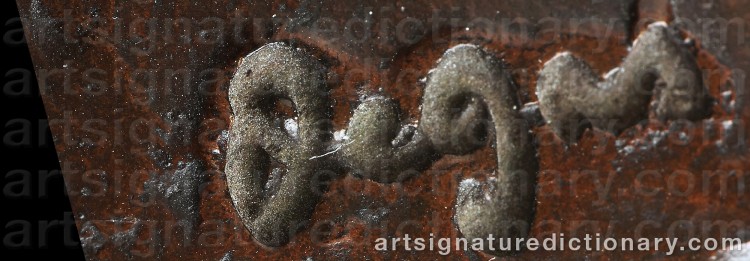
Signature considered genuine

Signature considered genuine
Explore other artists
Discover other notable artists who were contemporaries of Edgar DEGAS. These artists worked during the same period, offering valuable insights into artistic movements, signature styles, and authentication practices. Exploring related artists makes it easier to recognize common characteristics and artistic conventions of their era.
